All fish species only have little in common; the fact they are vertebrates and that they live in water. Excluding these two traits fish species vary greatly from one another, differing in shape, features and behaviour. For example, bony fish, which are the most abundant and diverse, are often fin fish with gills and scales, laying eggs to reproduce. Other species, called cartilaginous fish, such as sharks and rays, have skeletons made of cartilage instead of bone and some species give birth to live young. An example of a cartilaginous fish found in UK rivers are lampreys, which have an elongated cylindrical body and slimy skin instead of scales.
Although all fish live in water their environments greatly differ, giving them huge variety. Their varying habitats, along with the fact that they have been living on the Earth for more than 500 million years, means that fish species are very well adapted, relying on different abilities to survive and thrive. Did you know that many fish species can detect movement underwater using a special row of scales and sensors known as the lateral line? Other species can hunt by detecting electrical charges, and many fish are shaped and coloured to camouflage themselves against their surroundings.
Almost all fish species are cold blooded, getting their temperature from their surrounding environment. This is one of the reasons why in rivers and streams in the UK, the best light conditions is a mixture of light and shade, known as dappled shade, to allow the water to warm up to the optimum temperature.
Grayling
Graylings are silvery fish, distinguished by their amazing large dorsal fin brightly coloured with banks of green, orange, purple and red. They also have a small adipose fin between the dorsal fin and tail, making them part of the salmonid family.
Differing from other salmonid species such as Brown Trout, Graylings are much more active in winter months. They also prefer deeper water with lower velocities than Brown Trout, eating smaller invertebrates predominantly on the river bed and can even eat fish eggs when food sources are low.
They are very sensitive to pollution and are generally only found in clean, fast flowing waters, making them an important indicator of high water quality.

Perch
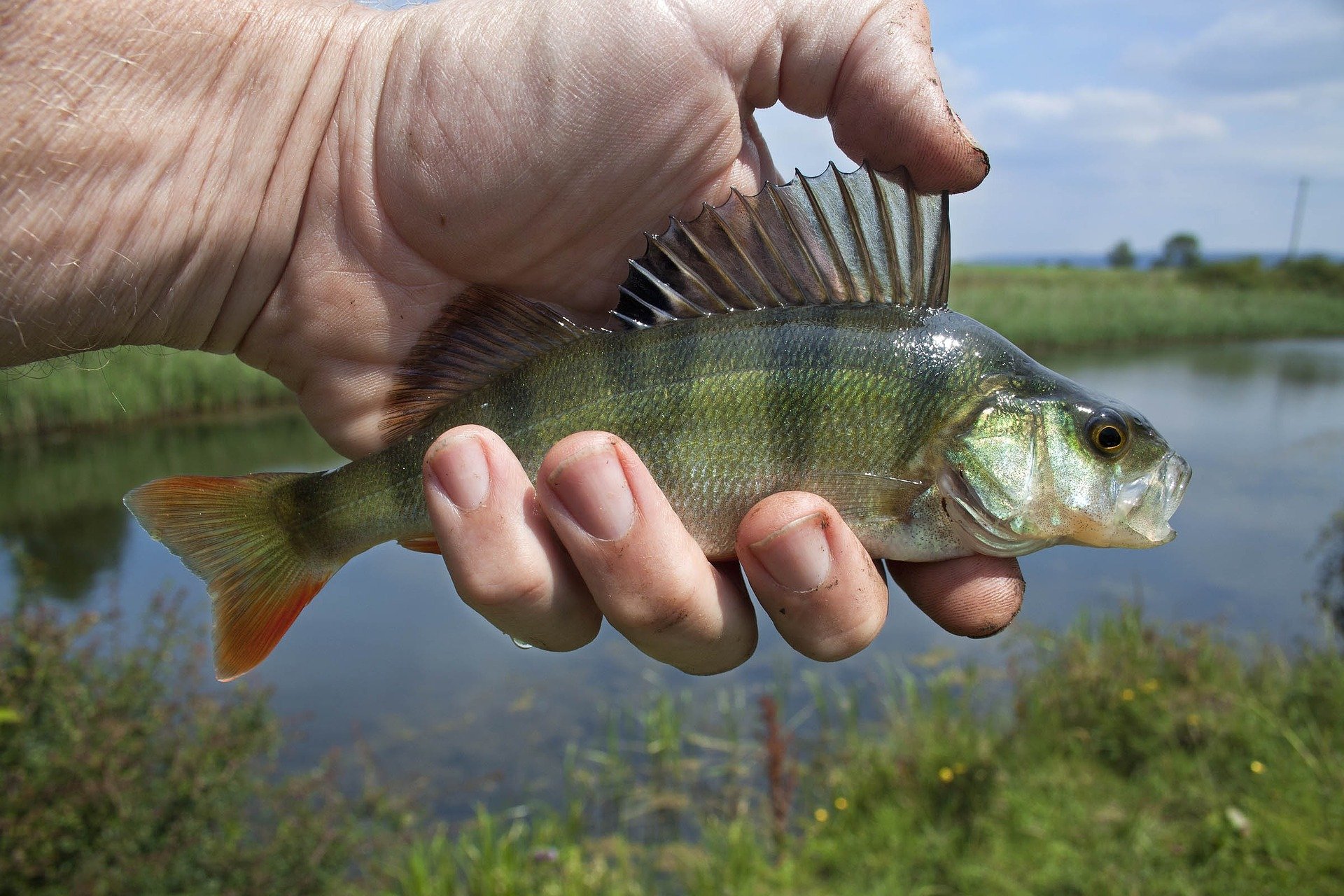
These green fish are commonly decorated with black stripes and can be identified by their bright orange or red fins. Often seen in shoals, small members of the species are abundant throughout the UK, whereas larger individuals are only present in smaller numbers.
Perch spawn in April, waiting three weeks before the eggs hatch and the juveniles are released into the river. Interestingly, before the eggs are fertilised they are laid in sticky bands up to 2m long around rocks and aquatic vegetation.
Hunting a variety of prey, they are aggressive predators which feed on invertebrates, crayfish and smaller fish, living and foraging in still, slow or fast moving waterbodies and waterways around the UK.
Stoneloach
Stone loach are found in rivers and streams but are hard to spot because of their sand brown colourings which effectively camouflage thems along the river bed, often burying themselves in sand or gravel.
Although hard to spot, they can be distinguished by characteristic six whiskers around its mouth and its long slender body, reaching up to 8cm. It is only one of two loach species found in the UK, with its counterpart, the spined loach, being rarer and only found in slower, muddier water.
Stoneloach are a nocturnal species and so use their whiskers to find prey at night along the river bed, most commonly hunting small invertebrates along the clean stoney waterways they prefer to live.
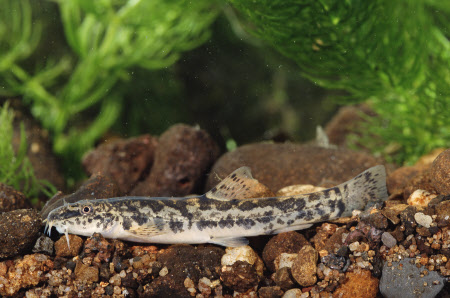
Eels
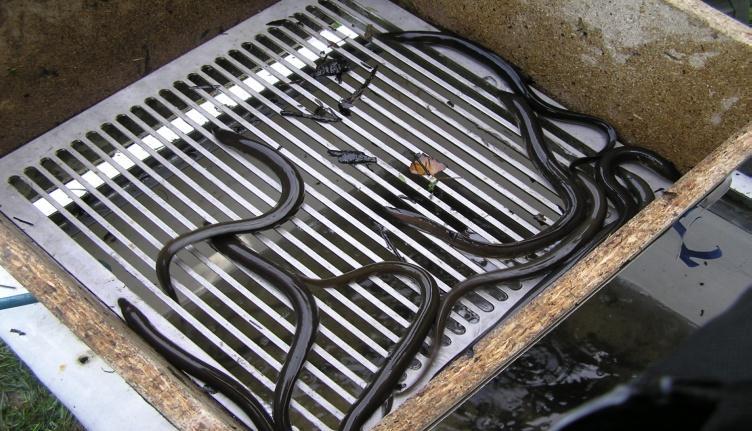
Eels are a declining species distinguished by their long cylindrical bodies and dark greeny brown colouring. Their decline could be due to multiple factors, the presence of weirs being one, as they cannot pass them in order to move upstream.
Born in the Sargasso sea they reach the UK as small transparent elvers (young eels) about three years later. They then mature here, turning their more recognisable darker greeny brown colour.
Being generally scavengers while living in freshwater rivers, these eels feed on dying and dead animals, fish eggs, small fish and invertebrates. They then migrate back to the Sargasso Sea to spawn after about 15 years.
As eels have declined by 95% over the last few years they are protected under Environmental Law and it is illegal to remove them from waterways.
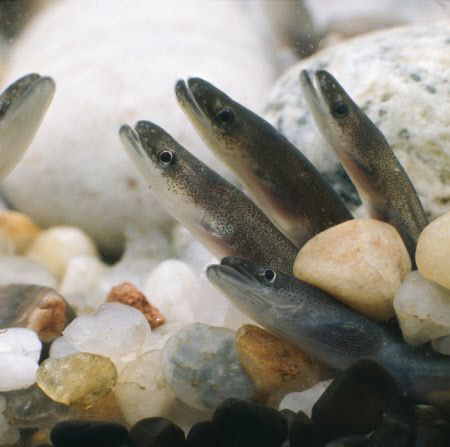
Under these laws, eels are:
- Listed as Critically Endangered on the International Union for Conservation of Nature (ICUN) Red List of Threatened Species
- A UK BAP Priority Species On the OSPAR list of threatened and/or declining species and habitats
- A species of principal importance for the purpose of conserving of biodiversity under the Natural Environment and Rural Communities Act 2006
- A priority species under the UK Post-2010 Biodiversity Framework.
Brook Lamprey
Brook lamprey are a small species up to 15cm long with elongated cylindrical bodies similar to eels. Likewise, lamprey also have the same sucker mouth rather than a jawed mouth.
They are dark brown or grey with a white belly and yellow eyes, allowing them to camouflage their movements along the river bed, foraging for bacteria, algae and detritus.
Being rare in the UK and a sign of high water quality, their presence along a river course is very important.
Where Brook Lamprey are present there is the possibility that River and Sea Lamprey are present as well. Comparably, Brook Lamprey are the smallest species up to 35cm smaller than River Lamprey, which can grow up to 50cm long and Sea Lamprey up to 100cm long.
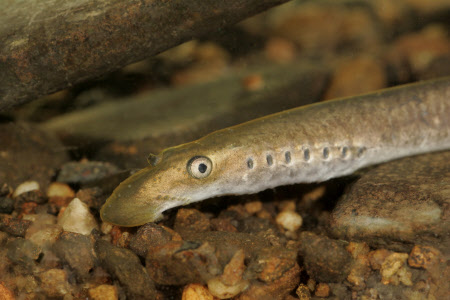
Differing in colour, River Lamprey are more blueish and Sea Lamprey are more of a brown grey colour. These two larger species also feed on detritus, like Brook Lamprey, but will eat other fish species as well. They are also fairly rare in the UK and are both listed on the ICUN Red List of Threatened Species.
However, the main difference between these two species and Brook Lamprey is their migration to sea and return to freshwater streams to spawn.
As Brook Lampreys are rare in the UK, they are protected under Environmental Law.
Under these laws, brook lamprey are:
- Listed on the international union for conservation of nature (ICUN) red list of threatened species
- Listed on Annex III of the Bern Convention and Annex II of the EC Habitats Directive (3).
Brown Trout
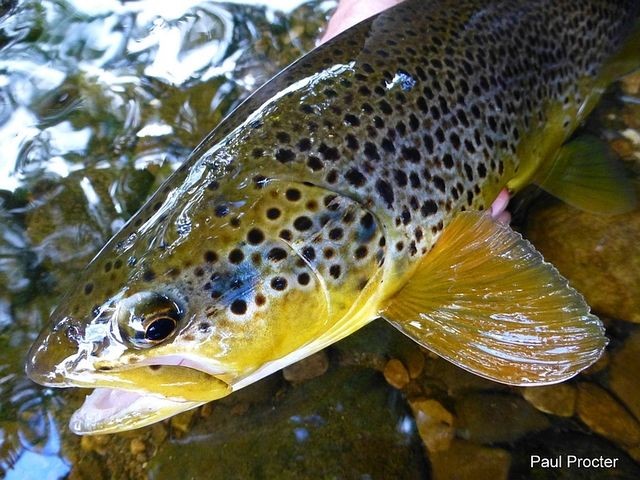
Brown trout are an amazing golden brown salmonid species found throughout the Witham catchment. Growing up to 80cm long, this large predatory animal preys on small fish and flying insects in fast flowing, stony waters. Did you know that larger individuals can even eat small swimming mammals like mice if they choose?
Easily distinguished by their colour and pale-ringed dark spots, this species lives in fast flowing waterways and requires gravel along the riverbed to build spawning redds (nests) to bury their eggs.
These redds are built by females which move to make an indentation in the gravels on the river bed. The male will then defend the nest until the eggs are laid and fertilised, ready to be buried under the gravel.
Brown Trout can live up to 20 years but, as they are very territorial fish they need habitat with plenty of cover to happily co-exist in the same environment. This is one of the many reasons why woody material in the river in so important.
Brown Trout are an important specise in the UK and are indicators of a healthy ecosystem. As such, they are protected under Environmental Law. Under these laws, Brown Trout are:
- A Priority Species Under the UK Post-2010 Biodiversity Framework.
Sea Trout
Sea Trout are a type of Brown Trout, differentiated by their life at sea compared to the Brown Trout’s life in freshwater rivers. Their migration to a salt water environment turns them a distinguishable silvery colour and means they grow lot bigger due to an increase in food supply.
The determining factor for whether a Brown Trout migrates to the sea, becoming a Sea Trout, is ancestry and availability of food. If the species has good environmental conditions were it is it will not risk the migration that has dangers such as increased predation.
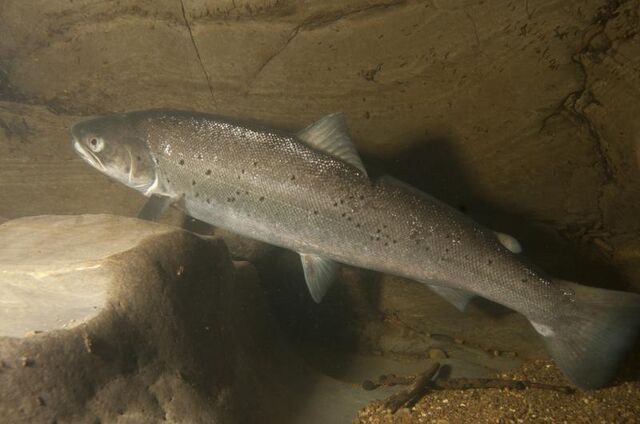
They return to the same rivers they were born in to spawn and often revert back to their original brown colourings. At this stage of their life, this makes them extremely difficult to distinguish from the Brown Trout species. However, when they attempt to reach these rivers their passage can often be blocked by barriers and weirs, highlighting the importance of fish passes along freshwater river courses.
Stickleback

Sticklebacks are small brown coloured fish with silvery sides, up to 7cm long, identified by a number of spines along their back. Most commonly in the UK with three spines, but they can have up to 16 spines. Having scaleless skin, they are protected by a number of thin, bony plates.
They can be more easily identified in spawning season when males have a red belly and females become a more silvery colour. Did you know the male of the species builds a nest for the eggs using plant matter glued together by threadlike, mucous secretions from his kidneys? When the nest is full with fertilised eggs the male then guards his spawn until they hatch. Caring for the eggs by fanning them with his pectoral fins, keeping them aerated, and defending them from intruders.
Eating tadpoles, small fish and invertebrates, Three-Spined Sticklebacks are a diverse species, with some choosing to migrate to sea in the winter and return to freshwater rivers to reproduce in the spring. Their ability to live in both clean and polluted waterways makes them one of the most common freshwater fish in the UK.






